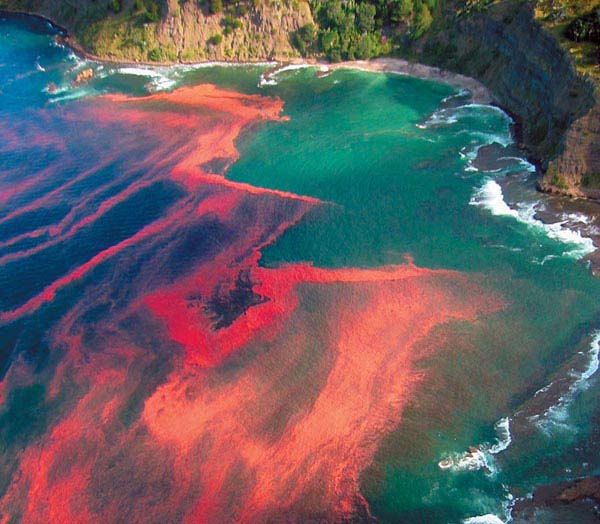The aquaculture insurance industry “lacks the understanding and tools to adequately assess the risk of harmful algae blooms, or HABS, in terms of their likely location, frequency and impact,” says a job ad for a Ph.D.-level researcher in Scotland.
Th study into HABS — the existence and severity of which came to the fore in Scotland when the industry’s mortality rates were released — is being funded by U.S.-based insurance company, XL Catlin. Their exposure to aquaculture mass mortality events is confirmed by the presence of 19 dedicated underwriters, brokers and claims adjusters in all the world’s salmon-farming hotspots.
The Ph.D. job ad, which expires on Thursday, points to the insurance industry’s two-continent exposure to mass mortalities and escapes, where every fish is insured. That Ph.D candidate’s first task will be to “assemble (algae-death) data sets of relevance to UK aquaculture”, a nod to recent mass mortality blamed on previously ignored algae blooms in cold Scottish waters.
Read Escapee losses negligible, insurable
Asked if his company had exposure to mortality events on two continents, an insurance industry source told SalmonBusiness, “Yes. We’re a large company.”
“Algae is also a problem in in Norway, but we don’t see as many losses in Norway as were seen, for example, in Chile in 2016,” he said, adding, “It’s Ireland and Scotland which are the main areas for algae losses.”
 Oversight
Oversight
The source, who has examined first-hand the losses inflicted by HABS, is backed by underwriters and brokers, and by claims filed around the world and handled in his office.
“If you file a claim in Chile, it’s handled here,” he said.
According to the Scottish Association for Marine Science, which matches post-grads to applied research assignments with the industry, “There is also a lack of understanding of how HAB risk will develop and expand in a changing climate and expanding global aquaculture industry.”
Read Scottish “morts” cross-section shows higher cost of disease
“The project will seek to improve HAB early warning skill for the benefit of the aquaculture industry and its customers and insurers,” the statement, believed to be written by SAMS’ Professor Keith Davidson, said. He’s on a steering committee of the GlobalHAB study group aiming to provide or early warnings and mitigate the effects of toxic algae.
Lower rates
“Currently, the insurance industry has no metric to determine the harmful algal bloom risk at a particular location or how this risk may change with season or environmental conditions. Such uncertainty influences premiums for aquaculture and risk for insurers.”
In other words, the study could help lower per-fish insurance rates for salmon-farmers
Chile’s 2016 blooms in Reloncavi Sound and Fjord killed 39 million salmon or 100,000 tonnes of production worth USD 800 million.
UK fish mortality is usually blamed on two species of algae: Karenia mikimotoi and spiney diatoms of the genus Chaetoceros.










